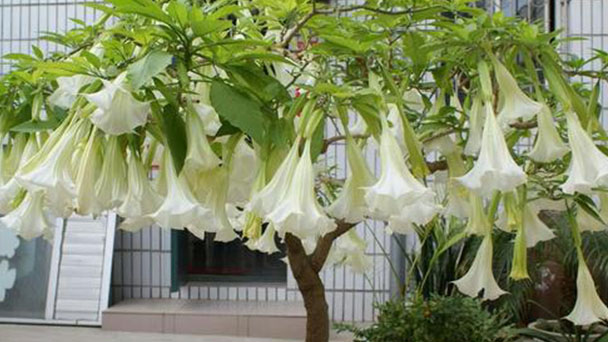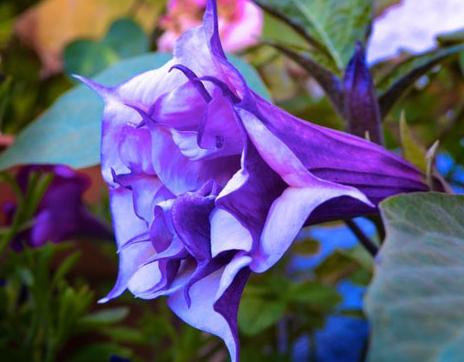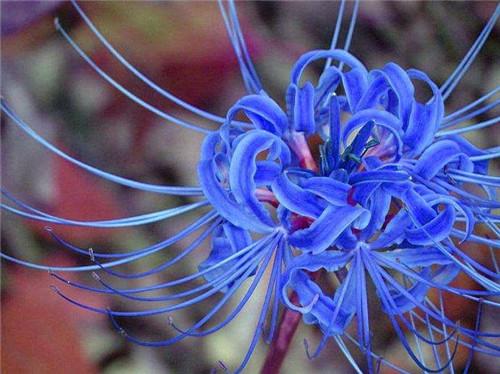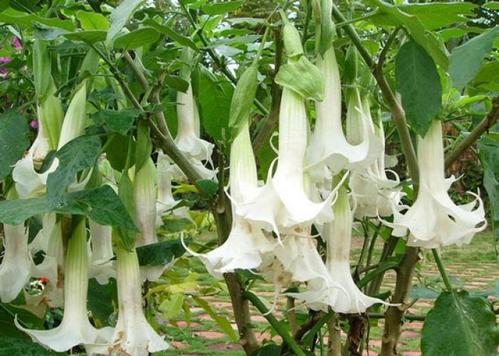Jimsonweed profile
Written by Maggie
Dec 22 2020

Datura stramonium, known by the common names thorn apple, jimsonweed or devil's snare, is a plant species in the nightshade family and Datura genus. Its likely origin was in Central America, and it has been introduced in many world regions. It is an aggressive invasive weed in temperate climates across the world.
Jimsonweed picture

Morphological characteristics of Jimsonweed
Jimsonweed stem is stout erect, plant height 50-150cm, upper part binary branching, young branches pubescent, lower lignified. The whole plant is smooth , glabrous, sometimes sparsely hairy on young leaves.
Leaves are broadly ovate, apical acuminate, base asymmetrically cuneate, margin irregularly undulate lobed, lobes triangular, both sides sparsely pubescent along veins and margins, petiole 3~5cm long. Flowers are solitary and axillary branches bifurcation, stem erect, with different varieties of design and color is white, red, purple, etc., and calyx tubular, slightly edge crack, 4 ~ 6 cm long, apex 5-lobed, not close to the cylinder, corolla funnel-shaped, 5-10 cm long, 3 ~ 4 cm in diameter, 5 shallow crack, lobes with a short point, stamens 5, ovary ovoid, densely covered with soft guard hair, incomplete four chamber, fruit for capsule erect, ca. 4 cm long, about 3 cm wide, surface blunt spines, autumn and winter to mature, to mature after four discs divided, slightly sweet nuts, seeds oblate kidney-shaped, tan, 1 cm in diameter.
The ecological habits of Jimsonweed
Jimsonweed likes to grow in the sunny scrub, grass, residential side, roadside or river edge. The cultivation requirements are not strict, and has a strong drought resistance ability, to seed overwinter.

The main value of Jimsonweed
Medicinal
People in China use Jimsonweed to treat diseases, as early as The Three Kingdoms period,
Clinical experiments have proved that modern medicine Jimsonweed contains the main composition of alkaloids of scopolamine has obvious sedation, mydriatic, inhibit glands, excited respiratory center, but has obvious inhibitory effect to the cerebral cortex, resistance to dilate the capillaries, improve microcirculation, and dizzy. Jimsonweed is now widely used in medical field for anesthesia. Jimsonweed also has a significant effect on the withdrawal treatment of morphine addicts and is an effective drug treatment method. In addition,Jimsonweed can effectively treat children with severe pneumonia complicated with multiple organ dysfunction syndrome, and it is also the first choice for rescuing organophosphorus pesticide poisoning. Jimsonweed has the functions of relieving asthma, relieving cough, relieving spasm, analgesia and anesthesia. It can be used to treat joint pain, asthma, cough, gastrointestinal spasm, neurotic migraine, fall injury and other diseases. It can also be used to treat stomachache and rheumatism. Also use Jimsonweed straw and leaf ironing treatment heel bone spur heel pain.
In terms of agricultural control, Jimsonweed has a toxic effect on a variety of pests, as well as a certain degree of inhibition on bacteria.
The toxicity of Jimsonweed
The poisoning of Jimsonweed was caused by the ingestion of seeds, fruits, leaves and flowers of mandala weed, and its main chemical components were scopolamine, scopolamine and atropine. The toxic effect of alkaloids was mainly to excite the central nervous system and then inhibit and block the acetylcholine reaction, showing a state of high sympathetic excitement after poisoning. It is believed that the main poisoning mechanism of mandala is paralytic parasympathetic nerve, which produces an excitatory effect on the central nervous system, especially on hypothalamus and medulla oblongata, especially on motor and language function. The whole Jimsonweed strains are poisonous, the seeds are the most toxic, followed by young leaves, dry leaves are less toxic than fresh leaves, the Jimsonweed poisoning, generally half an hour after eating, the fastest 20 min symptoms, no more than 3 h, the symptoms disappear within 24 hours or basically disappear, serious in 24 hours after the onset of drowsiness, spasm, cyanosis, and finally death. Children can be poisoned if they eat 3-8 seeds. Symptoms and symptoms such as dizziness, heavy eyelids, silence, unsteady standing, dilated pupils, dry and hot mouth, dysphagia, hallucination, drowsiness, elevated body temperature (some body temperature may be as high as 40℃), chills in hands and feet, muscle paralysis and other symptoms occur 30 to 60 minutes after ingestion. Severe victims can even fall into a coma, with symptoms such as a drop in blood pressure and reduced breathing, and eventually die of respiratory failure.

Latest Updated
- Benefits of Bugleweed - 7 Science-backed Health Benefits
- Bugleweed Dangers & Side Effects - Is It Poisonous?
- How to Plant Evergreen Trees - What You Should Know
- When to Plant Evergreens - Grow Guide for Evergreen Trees
- 12 Wonderful Evergreen Shrubs for Your Garden
- 12 Popular Evergreen Plants with Pictures for Beginners
- When And How To Prune A Lilac Bush Like a Pro
- How to Grow & Care for Lilac Vine (Hardenbergia Violacea)
- Japanese Lilac Tree (Syringa Reticulata) Care & Propagation Guide
- Shumard Oak Pros and Cons - What to Know
Popular Articles
- Winter maintenance of Antirrhinum Majus
- How to Grow Terminalia Mantaly Tree
- How to Grow and Care for Crossostephium Chinense
- How to grow Antirrhinum Majus in spring
- Peristeria Elata (Dove Orchid) Profile: Info & Care Guide
- Underwatered Snake Plant (Sansevieria Trifasciata) - Signs And How To Fix
- How to Care for Brazilian Jasmine Plant (Mandevilla Sanderi)
- How to Grow & Care for Graptopetalum Purple Delight in Summer
- Rosa Chinensis (China Rose): Plant Growing & Care Tips
- How to Care for Baby Sun Rose (Aptenia Cordifolia)